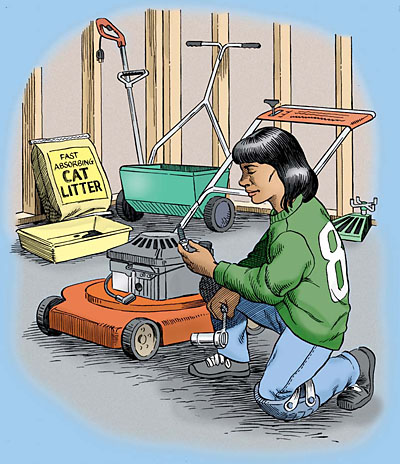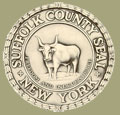For homeowners:
Mow it right!

Proper mowing gives grass a competitive advantage over many weeds and helps keep your lawn healthy.
When turf is mowed too short (scalped) it weakens the grass and will allow aggressive weeds to dominate. Mowing too short will make your lawn more vulnerable to diseases and drought. Lawns kept at a lower height may require more fertilization to maintain the same level of quality!
Keep your lawn at 3Ē or higher to encourage a deep root system that can access more water and nutrients.
Leave the grass clippings on your lawn. You will be returning nutrients to the soil, thus reducing the amount of supplemental fertilizer the lawn may need. In fact, clippings can return 1.5 to 2 pounds of nitrogen per 1,000 square feet per year to your lawn. Be sure lawn clippings are not bagged and hauled away. Mow frequently enough so clumps of clippings are not left behind where they can smother the grass.
| A dense lawn crowds out weeds. |
If you donít leave the clippings on the lawn, consider composting them to add organic matter to your garden soil or landscape plantings.
Never allow grass clippings from the mower to be directed toward hard surfaces, (i.e. walkways, driveways, etc.), which may allow them to reach storm drains and eventually make their way into waterways, bays, streams and estuaries.
| Leave your clippings on the lawn or compost them to recycle nutrients instead of sending them to the landfill. |
If your lawn is near a stream or estuary, be sure to leave at least a 10-foot buffer of higher cut turf or an appropriate native species that separates the lawn from the water so nutrient-rich clippings cannot reach the water.
Keep your mower blades sharp. Using sharp blades can reduce fuel costs by up to 20% and will reduce the opportunity for disease organisms to enter into the grass blades.
|

